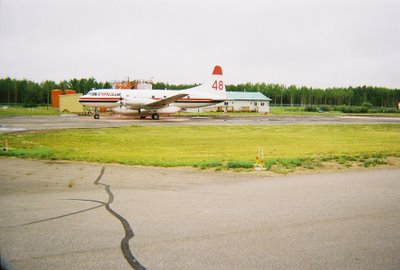Screw scheduling
In the few short months I've been at my company, I've learned who the good people in dispatch and crew scheduling are and who are not so bright. Yesterday I had a very bad encounter with one of the persons who's not the best. Sometimes they make decisions that just get me scratching my head and going "Why???...what the hell are you thinking"? This particular person has a reputation for being not the brightest. He has good intentions, but the implementation of his intentions leave little to be desired.
The grand plan for yesterday was for me to reposition to another aircraft that had a captain on it, but no f/o. At the time I was on an aircraft, but had no captain. So far, so good. Sounds like a good plan, but its how the plan was put into action that really sucked. I get a call in my hotel room at 0 dark thirty saying "Your to reposition to another aircraft"...ok. fine...."Well your flight leaves at 1:00pm local time, gets into XXX airport at 4:30pm and you are to rent a car and drive to XYZ airport to meet up with the plane." So I'm thinking that's pretty crappy, but at least I'll have some duty time left over and will still be able to fly should a trip come up, ok, not so bad. So I get up from bed, stumble over to the computer and punch in driving directions from XXX to XYZ.......4 hour drive!!!! The gears in my head are turning...."what is this crap? this person is going to completely waste a day repositioning me. Not only is he going to waste my day, but the day of the captain I'm going to meet up with. So I called the genius back and ask what their reasoning was. Their reply was that it was the cheapest way of doing things. Again, a little more brain power used and they could have found a flight into an airport that was 2 hours closer and the same price as the ticket to XXX. It wouldn't have completely wasted a day. Just about 4 hours which would have left 10 hours of duty time and plenty of time to do a trip. Oh well, what are you gunna do?
The grand plan for yesterday was for me to reposition to another aircraft that had a captain on it, but no f/o. At the time I was on an aircraft, but had no captain. So far, so good. Sounds like a good plan, but its how the plan was put into action that really sucked. I get a call in my hotel room at 0 dark thirty saying "Your to reposition to another aircraft"...ok. fine...."Well your flight leaves at 1:00pm local time, gets into XXX airport at 4:30pm and you are to rent a car and drive to XYZ airport to meet up with the plane." So I'm thinking that's pretty crappy, but at least I'll have some duty time left over and will still be able to fly should a trip come up, ok, not so bad. So I get up from bed, stumble over to the computer and punch in driving directions from XXX to XYZ.......4 hour drive!!!! The gears in my head are turning...."what is this crap? this person is going to completely waste a day repositioning me. Not only is he going to waste my day, but the day of the captain I'm going to meet up with. So I called the genius back and ask what their reasoning was. Their reply was that it was the cheapest way of doing things. Again, a little more brain power used and they could have found a flight into an airport that was 2 hours closer and the same price as the ticket to XXX. It wouldn't have completely wasted a day. Just about 4 hours which would have left 10 hours of duty time and plenty of time to do a trip. Oh well, what are you gunna do?






